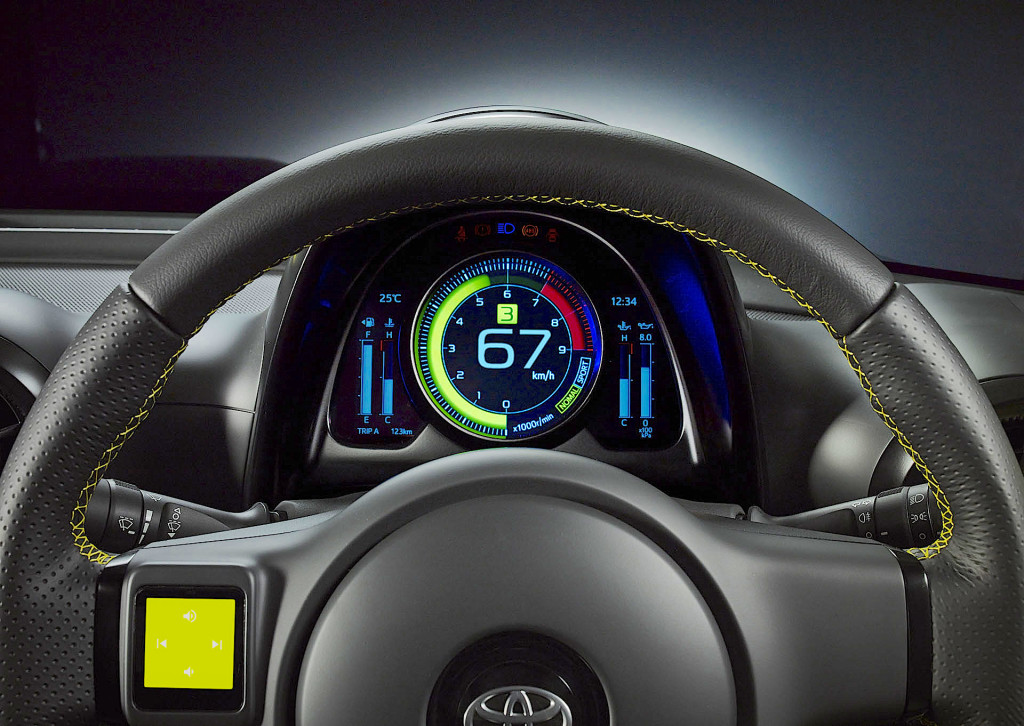By Steve & Tamami Laser
Toyota has released sneak peeks at its slate of world-premiere concepts for the Tokyo Motor Show. To say that we are surprised is an understatement.
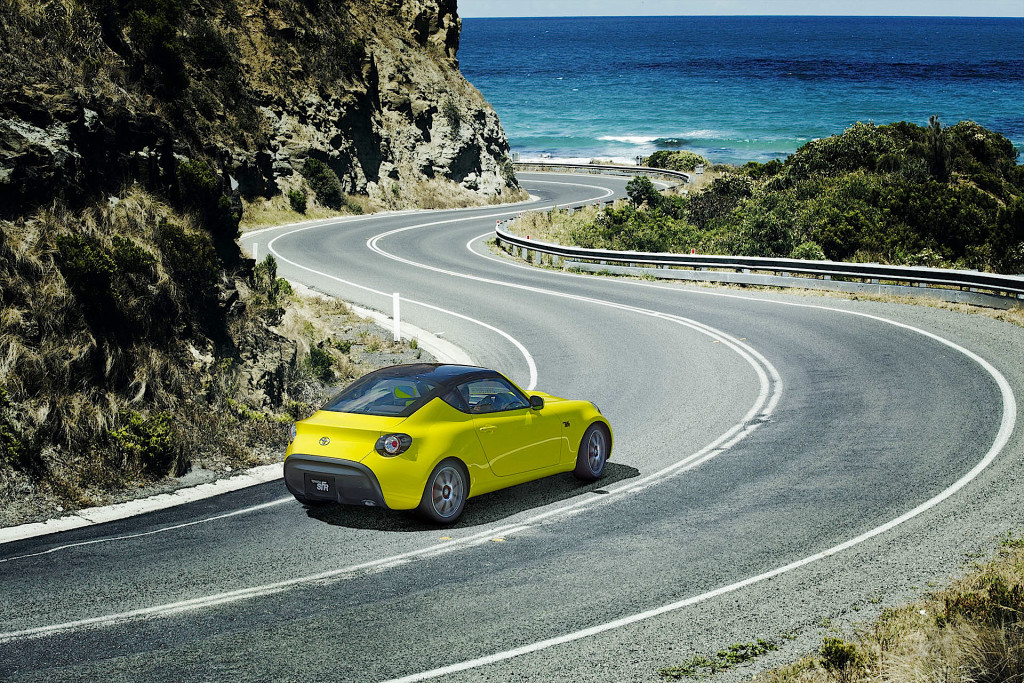 Toyota will present its vision for the future of mobility at this year’s show, where three very different concept cars will make their global debuts. The automaker says that while some of the vehicles slated to go on display represent the development and commercialization of groundbreaking new technologies, others seek to explore and strengthen the emotional bond between car and driver. Like this one…
Toyota will present its vision for the future of mobility at this year’s show, where three very different concept cars will make their global debuts. The automaker says that while some of the vehicles slated to go on display represent the development and commercialization of groundbreaking new technologies, others seek to explore and strengthen the emotional bond between car and driver. Like this one…
S-FR – The Affordable Sports Car
It only took a second (maybe two) to realize that the name of this car is remarkably similar to the Scion FR-S (called Toyota 86 in Japan and GT86 of 86GT elsewhere). In the spirit of classics Toyotas like the Sports 800 and MR2, the new S-FR is a concept vehicle that continues the proud heritage of Toyota’s fun-to-drive lightweight sports cars. Crafted as an entry-level model, Toyota says the concept emphasizes responsiveness, and aims to make a whole new generation fall in love with driving. (We hope so!) And it’s a fitting tribute to Sports 800 as it celebrates it’s 50th birthday this year.
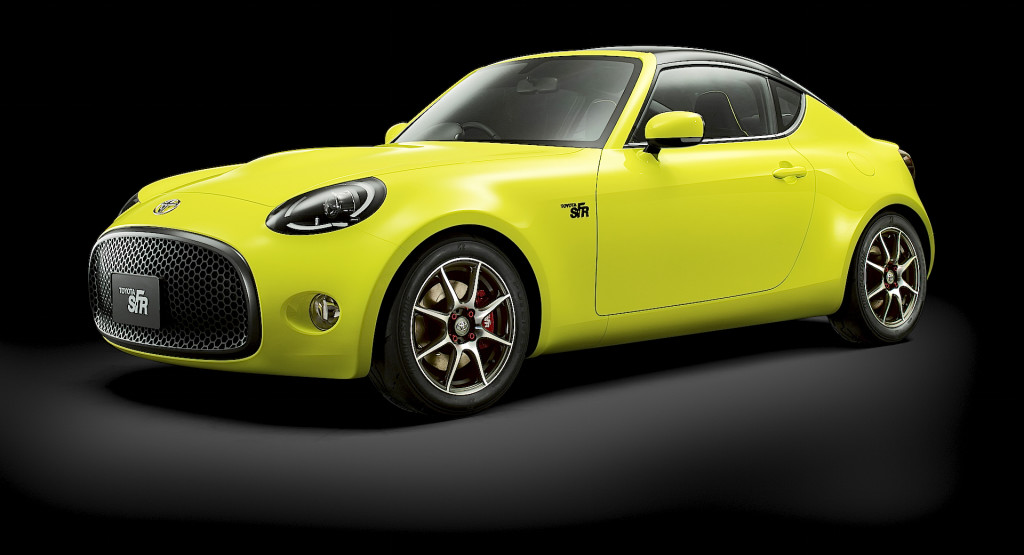 It appears to have a targa top like the Sports 800, although we’ll have to wait for the show to be sure. Meanwhile, the concept’s compact body is said to be incredibly light, “yet offers a smooth driving style. Not just a sports car, it pairs the simplicity of an entry-level model with an intimacy that brings human and machine closer together,” says Toyota.
It appears to have a targa top like the Sports 800, although we’ll have to wait for the show to be sure. Meanwhile, the concept’s compact body is said to be incredibly light, “yet offers a smooth driving style. Not just a sports car, it pairs the simplicity of an entry-level model with an intimacy that brings human and machine closer together,” says Toyota.
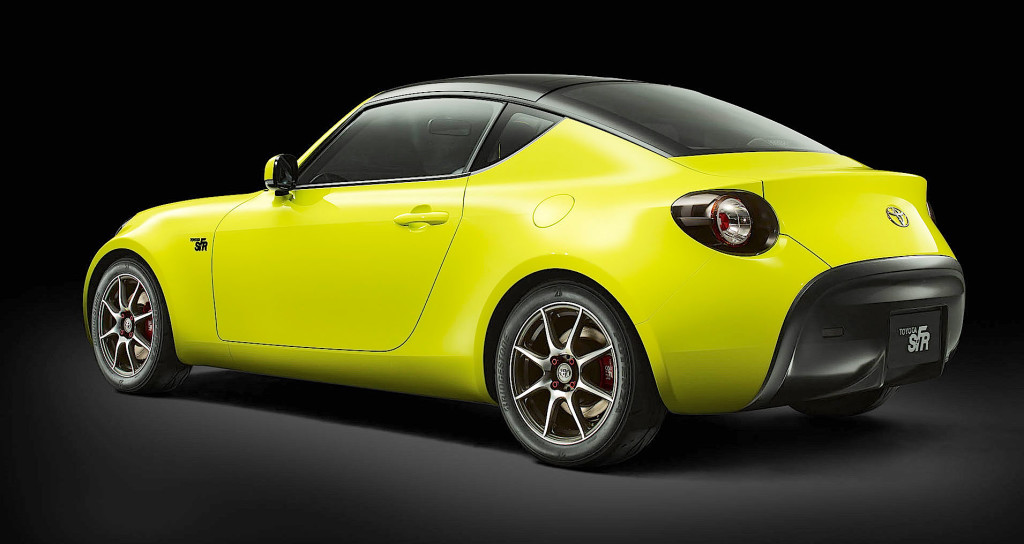 We know that it’s a rear-wheel-drive car, but we don’t know what’s under the hood yet. Toyota says that benefiting from the unique advantages of a lightweight sports car, the concept offers “smooth, responsive and direct handling that gives a real sense of communication between car and driver,” one key benefit of the FR (front engine/rear drive) format.
We know that it’s a rear-wheel-drive car, but we don’t know what’s under the hood yet. Toyota says that benefiting from the unique advantages of a lightweight sports car, the concept offers “smooth, responsive and direct handling that gives a real sense of communication between car and driver,” one key benefit of the FR (front engine/rear drive) format.
The engine might be a 4-cylinder boxer, which means that Subaru had a hand in the development of the concept. However, until we hear more, this is just speculation. We do know that it has a 6-speed manual gearbox and 50/50 weight distribution.
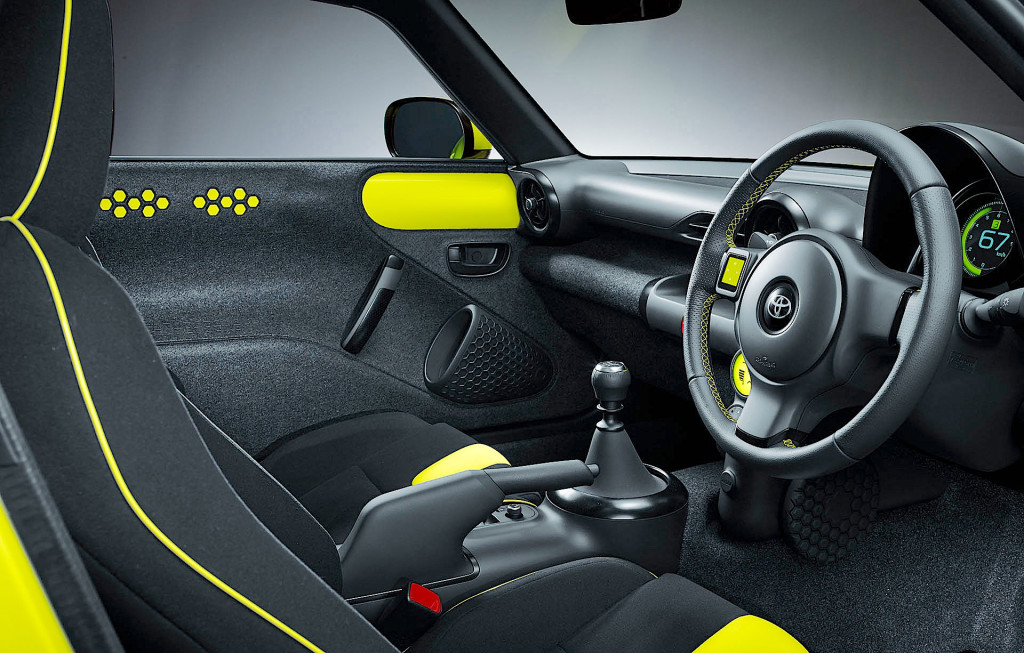 The concept’s long nose and wide stance make for an “archetypal sports car profile, while the familiar roundness of its frame inspires a feeling of closeness,” says Toyota. “The simple and modern finish of the interior rounds off a design that stresses approachable simplicity while conveying the vehicle’s performance and sporty spirit.”
The concept’s long nose and wide stance make for an “archetypal sports car profile, while the familiar roundness of its frame inspires a feeling of closeness,” says Toyota. “The simple and modern finish of the interior rounds off a design that stresses approachable simplicity while conveying the vehicle’s performance and sporty spirit.”
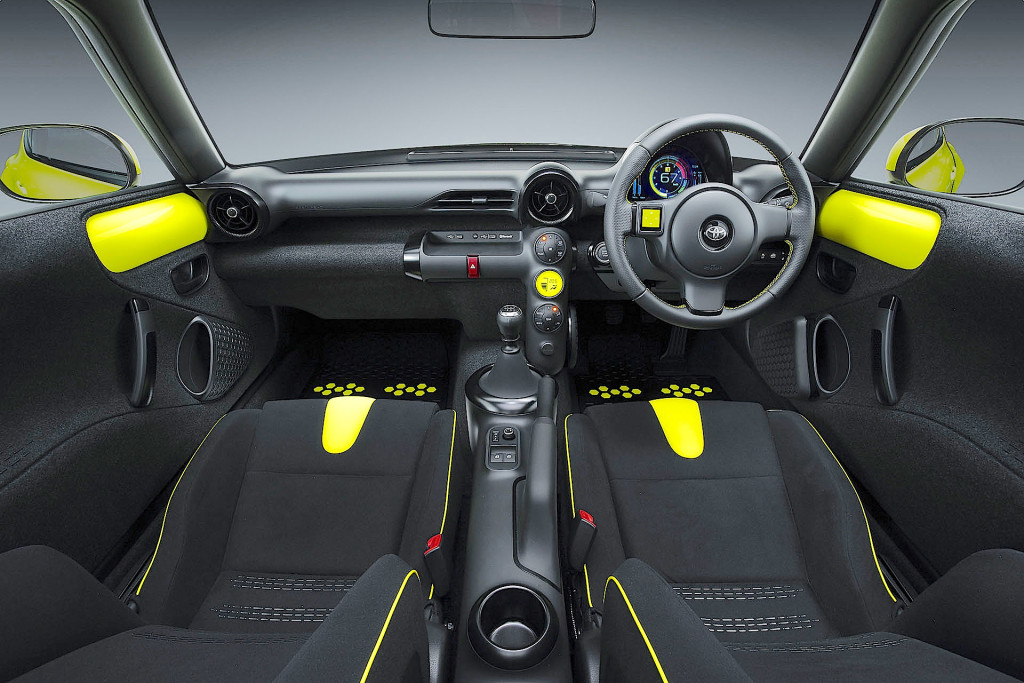 The FR layout gives the engine a front midship location. Optimal weight distribution and independent suspension “make for outstanding cornering performance.” While a 6-speed manual transmission is said to offer smooth acceleration, adding to the car’s fun, responsive drive.
The FR layout gives the engine a front midship location. Optimal weight distribution and independent suspension “make for outstanding cornering performance.” While a 6-speed manual transmission is said to offer smooth acceleration, adding to the car’s fun, responsive drive.
The Toyota S-FR was conceptualized as the kind of vehicle that “attracts its own die-hard fan base, whose members love driving and customizing it.” Not only do we wish Toyota would put it into production, but if they do, we really hope to see it in the U.S.
KIKAI – Dreaming of Steam Punk
Toyota says that “as the products of human creativity, dedication, and knowledge, machines should be objects of admiration.” Yes, indeed, we agree completely! This new concept was designed to “explore and emphasize the fundamental appeal of machines: their fine craftsmanship, their beauty, simplicity, and their fascinating motion. As a true concept car, the Toyota KIKAI’s appeal is simultaneously free from and reliant on the core concepts of automobiles.”
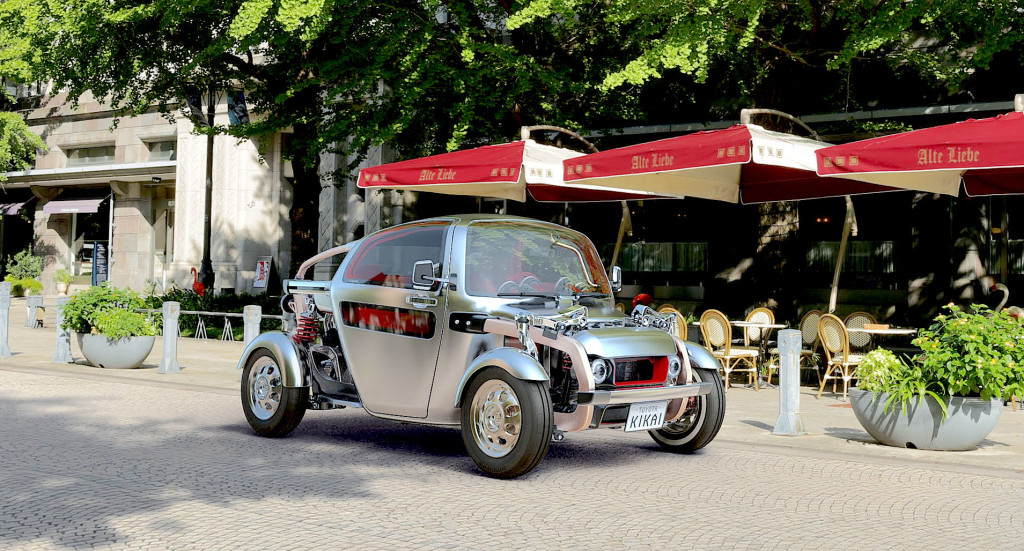 What we have is something that looks a bit like a cross between a helicopter and a dune buggy with Steam Punk styling cues added to the mix. This concept takes the machinery, normally hidden beneath the vehicle body, and makes an open display of its beauty. Toyota says that directly expressed in this way, the vehicle’s inner workings become part of the exterior.
What we have is something that looks a bit like a cross between a helicopter and a dune buggy with Steam Punk styling cues added to the mix. This concept takes the machinery, normally hidden beneath the vehicle body, and makes an open display of its beauty. Toyota says that directly expressed in this way, the vehicle’s inner workings become part of the exterior.
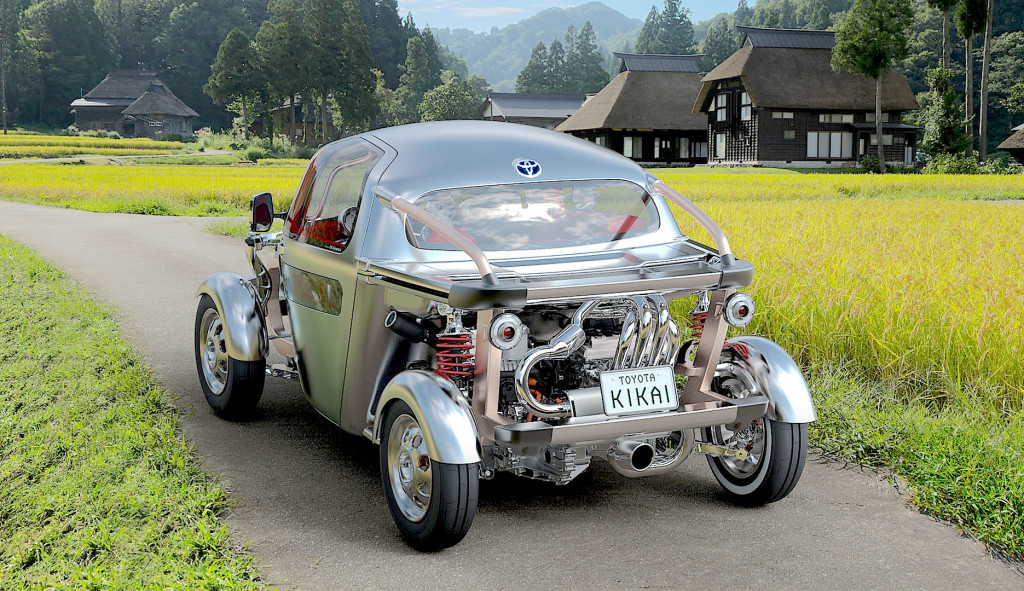 Toyota says that the small window at the driver’s feet is another distinctive aspect of this car’s structure, communicating the movements of the tires and suspension and the rush of speed along the road surface. Through the windshield, the movements of the upper control arm are also visible. This provides a novel driving sensation in which the machinery that supports the operations of cruising, turning, and stopping in ordinary everyday driving can be directly perceived with the senses.
Toyota says that the small window at the driver’s feet is another distinctive aspect of this car’s structure, communicating the movements of the tires and suspension and the rush of speed along the road surface. Through the windshield, the movements of the upper control arm are also visible. This provides a novel driving sensation in which the machinery that supports the operations of cruising, turning, and stopping in ordinary everyday driving can be directly perceived with the senses.
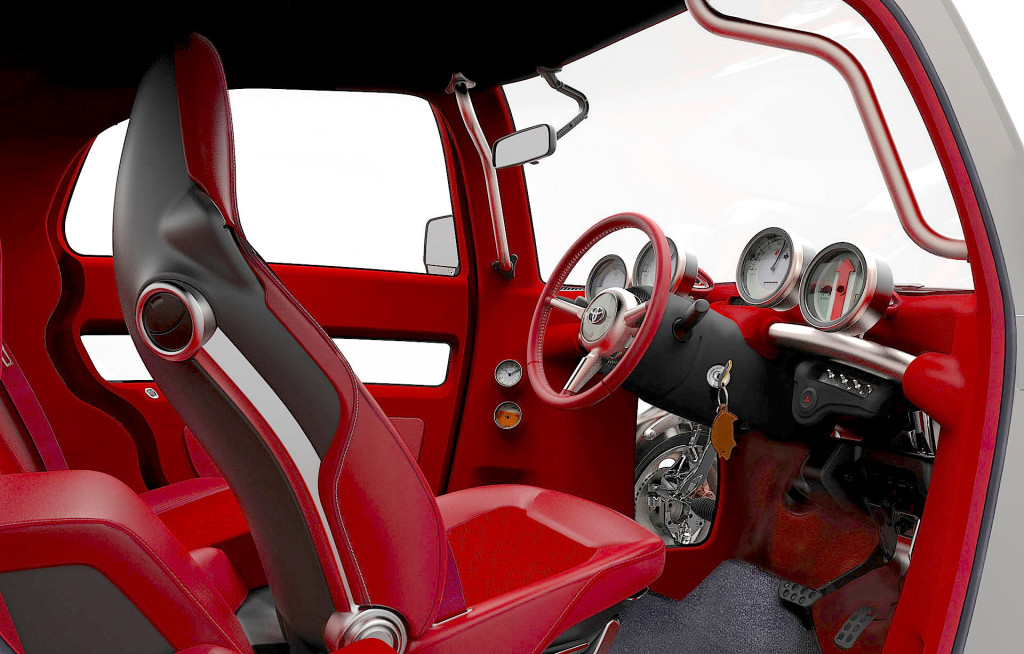 The adoption of a central driver seat, which places the driver at the heart of the car, gives a more instinctive sensory connection with the vehicle (and we say that there’s no need to engineer separate left- and right-hand-drive versions).
The adoption of a central driver seat, which places the driver at the heart of the car, gives a more instinctive sensory connection with the vehicle (and we say that there’s no need to engineer separate left- and right-hand-drive versions).
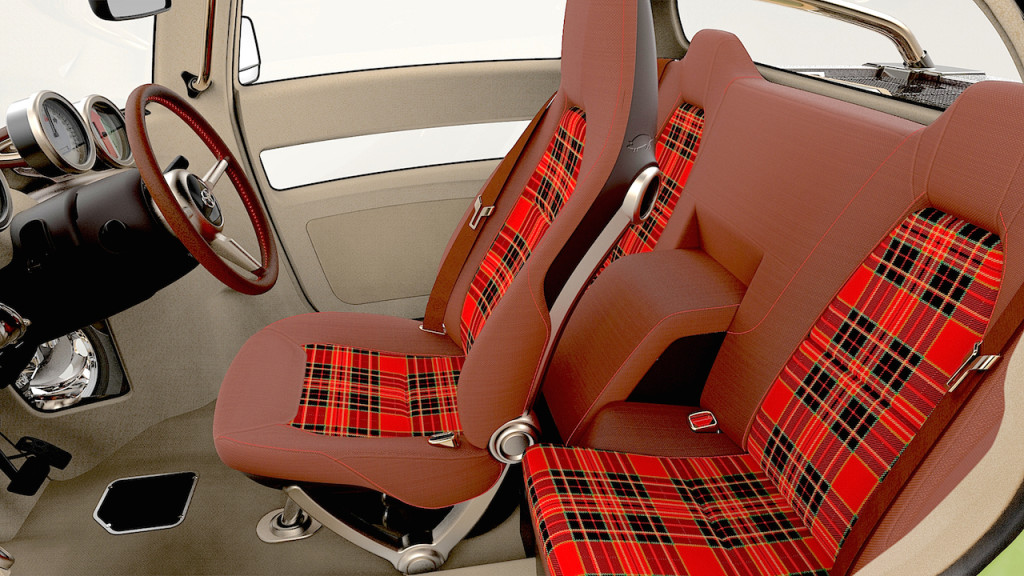 “While most vehicles conceal their inner workings beneath smooth sheet metal, this concept encourages us to appreciate the complex beauty of the mechanical aspects of cars,” says Toyota. “More broadly, it reminds us of the appeal of the physical and tactile in a digital age.”
“While most vehicles conceal their inner workings beneath smooth sheet metal, this concept encourages us to appreciate the complex beauty of the mechanical aspects of cars,” says Toyota. “More broadly, it reminds us of the appeal of the physical and tactile in a digital age.”
FCV Plus – Mirai’s Space-Age Brother
What does Toyota do for an encore to the Mirai? It introduces a concept that takes a wild look into the future of FCVs. Toyota says that compressed hydrogen has a higher energy density than electricity, can be generated from a wide range of raw materials, and is easy to store, making it a promising future energy source. That’s why Toyota envisions a sustainable society in which hydrogen energy is in widespread use – a society embodied by this new concept vehicle.
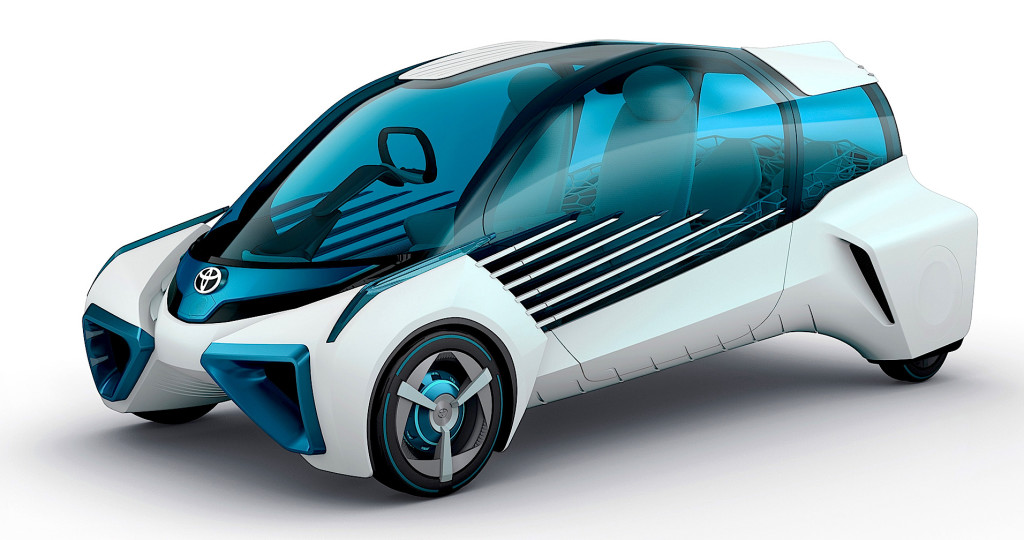 Toyota says that clean generation of hydrogen from a wide range of primary energy sources will make local, self-sufficient power generation a global reality, and fuel cell vehicles will take on a new role as power sources within their communities. Toyota’s aim is to add an all-new sense of purpose to the automobile by turning fuel cell vehicles from eco-cars into energy-cars.
Toyota says that clean generation of hydrogen from a wide range of primary energy sources will make local, self-sufficient power generation a global reality, and fuel cell vehicles will take on a new role as power sources within their communities. Toyota’s aim is to add an all-new sense of purpose to the automobile by turning fuel cell vehicles from eco-cars into energy-cars.
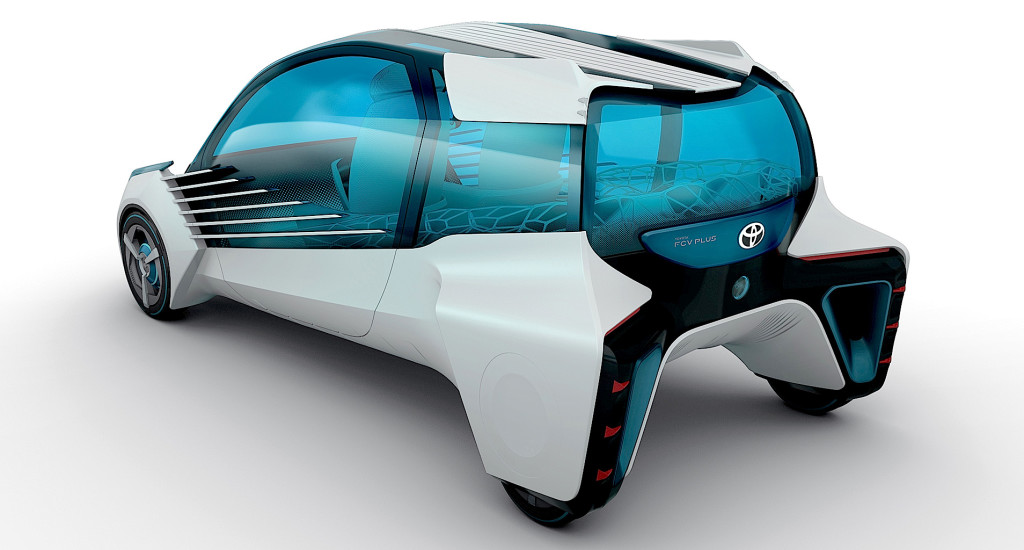 In addition to the vehicle’s own hydrogen tank, the car can also generate electricity directly from hydrogen stored outside the vehicle. The vehicle can thus be transformed into a stable source of electric power for use at home or away, says the automaker.
In addition to the vehicle’s own hydrogen tank, the car can also generate electricity directly from hydrogen stored outside the vehicle. The vehicle can thus be transformed into a stable source of electric power for use at home or away, says the automaker.
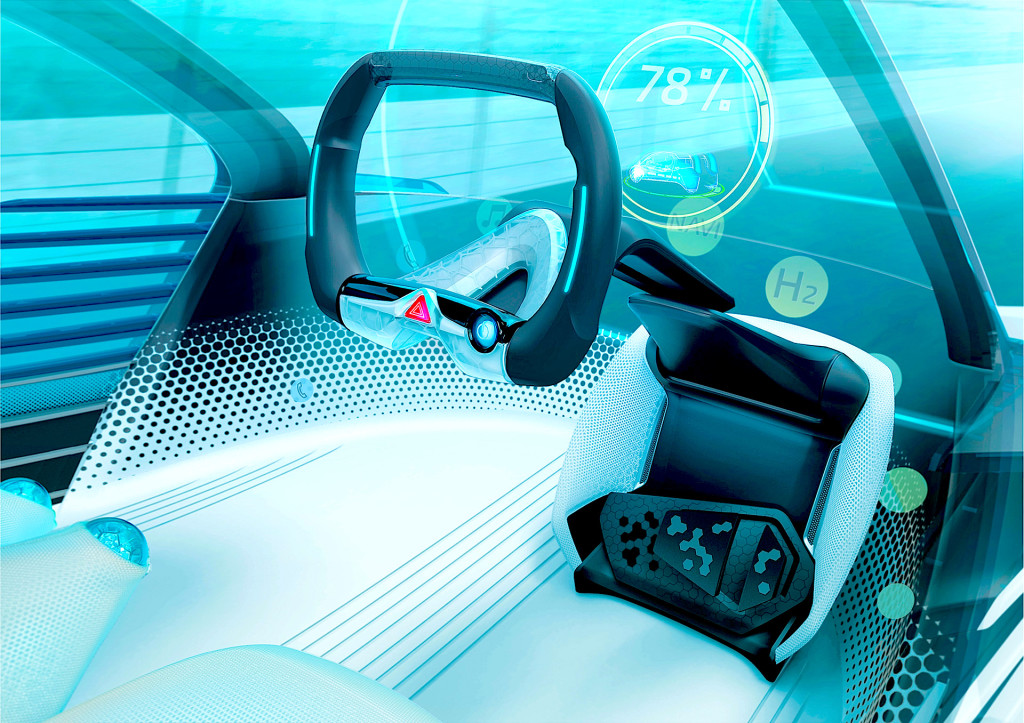 When the car is not being used as a means of transport, it shares its power generation capabilities with communities as part of the local infrastructure. The car’s fuel cell stack can be reused as an electricity generating device, transcending the traditional functions of cars. Put to versatile uses around the world, these stacks could contribute significantly to local communities says Toyota.
When the car is not being used as a means of transport, it shares its power generation capabilities with communities as part of the local infrastructure. The car’s fuel cell stack can be reused as an electricity generating device, transcending the traditional functions of cars. Put to versatile uses around the world, these stacks could contribute significantly to local communities says Toyota.
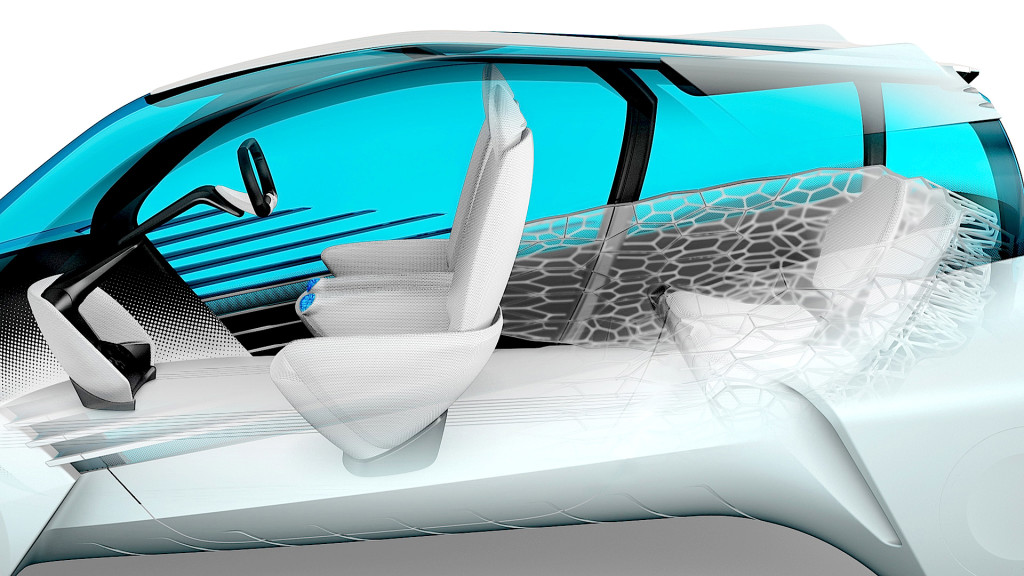 The fuel cell stack is mounted between the front tires, and the hydrogen tank behind the rear seat. “Together with the adoption of independent in-wheel motors in all four wheels, this allows for a spacious cabin despite the vehicle’s compact vehicle body,” says Toyota. “By concentrating functional parts at the front and the rear of the vehicle, this next-generation fuel cell vehicle package creates an optimal weight balance and a wide field of vision.”
The fuel cell stack is mounted between the front tires, and the hydrogen tank behind the rear seat. “Together with the adoption of independent in-wheel motors in all four wheels, this allows for a spacious cabin despite the vehicle’s compact vehicle body,” says Toyota. “By concentrating functional parts at the front and the rear of the vehicle, this next-generation fuel cell vehicle package creates an optimal weight balance and a wide field of vision.”
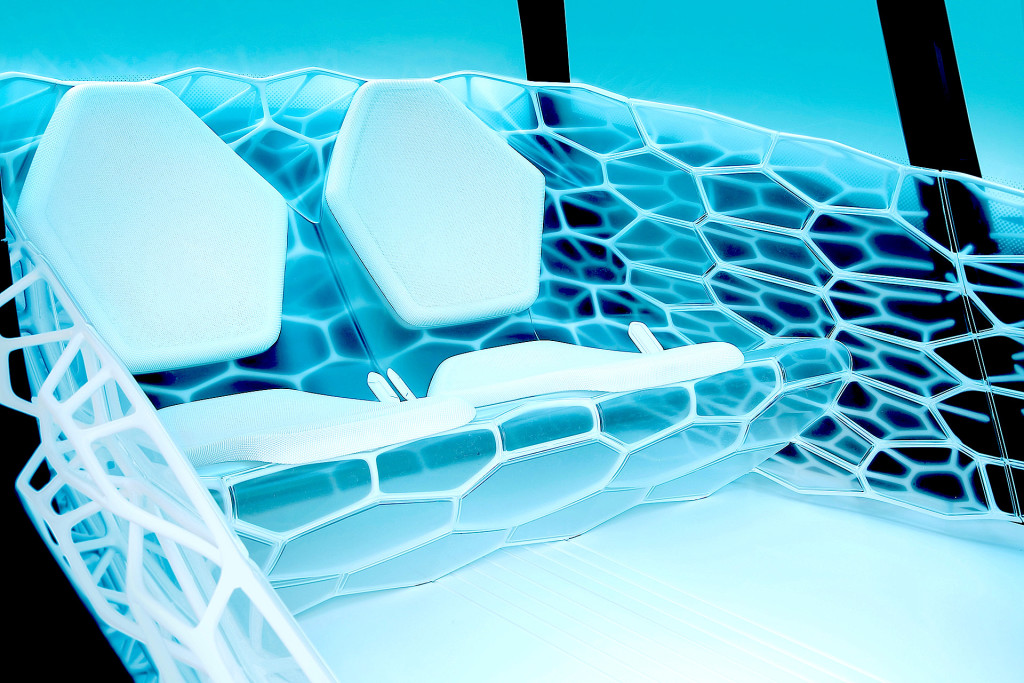 The exterior adopts a distinctive, sleek shape, while the frame structure of the interior ensures rigidity despite the light weight of the car. Altogether, the design conveys the vehicle’s advanced technology and outstanding environmental performance.
The exterior adopts a distinctive, sleek shape, while the frame structure of the interior ensures rigidity despite the light weight of the car. Altogether, the design conveys the vehicle’s advanced technology and outstanding environmental performance.
C-HR – From Frankfurt with Love
The Toyota C-HR concept made its first appearance at the 2014 Paris Motor Show as a design study, following which an updated five-door model went on display at the 2015 IAA Frankfurt Motor Show. Toyota says it hopes to show a production-ready model at the Geneva International Motor Show in March 2016.
The concept is visually distinctive, thanks to its expressive diamond-inspired styling, packed full of eye-catching details that have been sculpted and chamfered to “represent the faceted surfaces of a precision-cut gemstone.” The vehicle builds on two key elements of Toyota’s design language, “Keen Look” and “Under Priority,” to create a bold front profile that emphasizes the lower grille as well as increasing aerodynamic performance, cooling, and pedestrian safety, says Toyota.
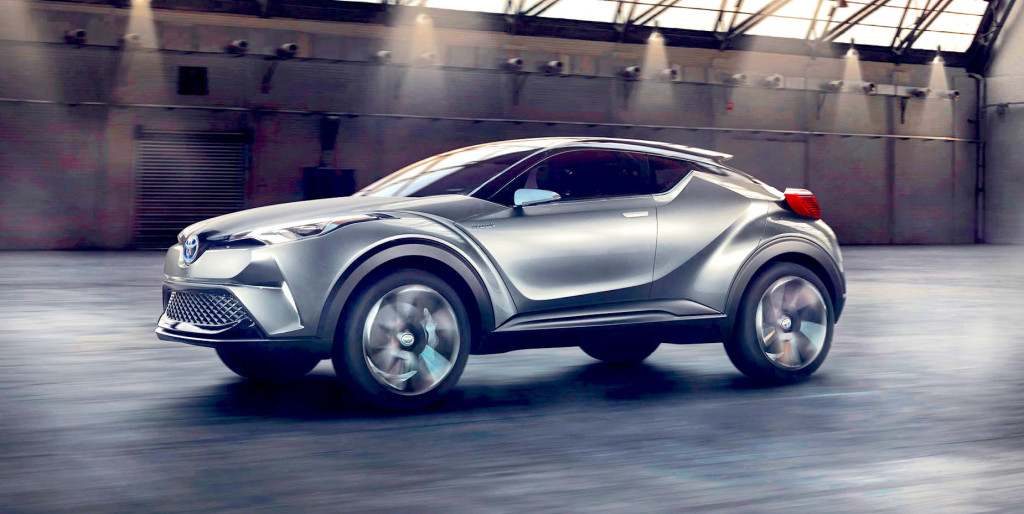 Like the new Prius, Toyota C-HR makes use of TNGA (Toyota New Global Architecture), resulting in a highly rigid body. “As a result of efforts to improve handling stability and ride comfort, the vehicle responds to driver handling with a directness that gives the driving experience an intuitive feel,” says Toyota.
Like the new Prius, Toyota C-HR makes use of TNGA (Toyota New Global Architecture), resulting in a highly rigid body. “As a result of efforts to improve handling stability and ride comfort, the vehicle responds to driver handling with a directness that gives the driving experience an intuitive feel,” says Toyota.
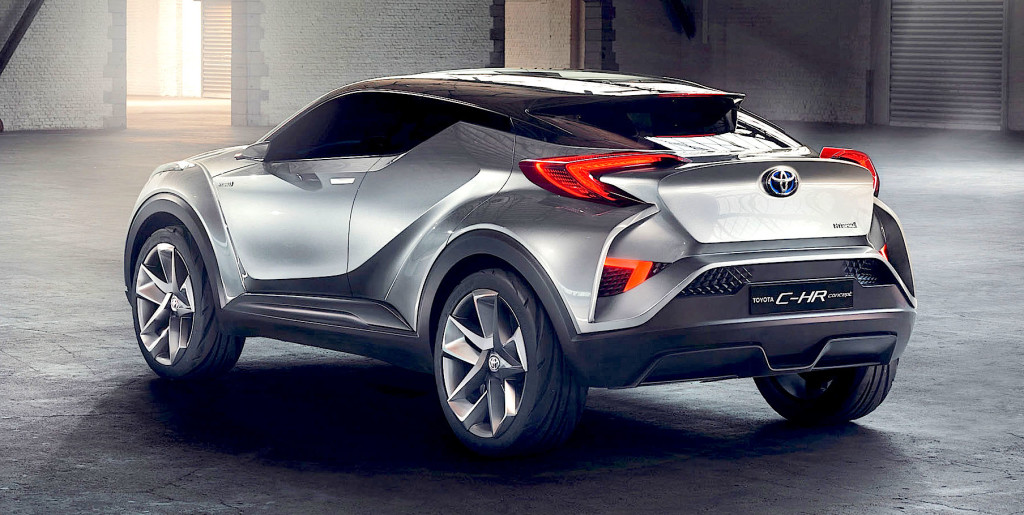 Toyota aims to give the concept an engine with thermal efficiency of over 40 percent, as well as further improving fuel efficiency by making the hybrid system, including the motor and battery, smaller and more lightweight. We look forward to seeing this smaller-than-a-RAV4 crossover at Tokyo.
Toyota aims to give the concept an engine with thermal efficiency of over 40 percent, as well as further improving fuel efficiency by making the hybrid system, including the motor and battery, smaller and more lightweight. We look forward to seeing this smaller-than-a-RAV4 crossover at Tokyo.
Prius – Reinventing the Hybrid
Toyota will also be displaying the new generation Prius that made its debut in the U.S.
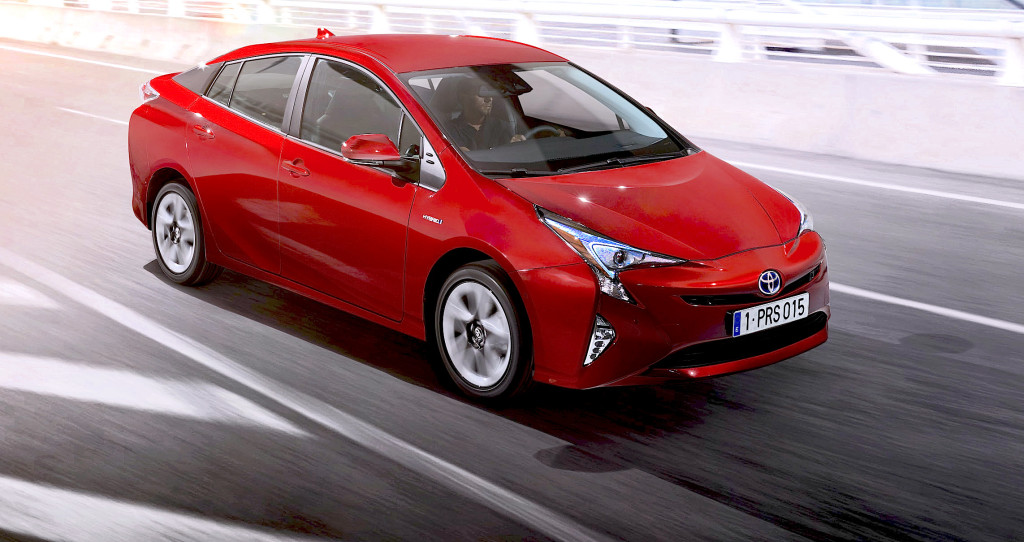 In Japan, the Prius will feature the Toyota “Safety Sense P” active safety package, which combines four advanced safety functions. Toyota Safety Sense P includes a Pre-collision System which uses the combined monitoring power of millimeter-wave radar and monocular camera to detect vehicles and pedestrians.
In Japan, the Prius will feature the Toyota “Safety Sense P” active safety package, which combines four advanced safety functions. Toyota Safety Sense P includes a Pre-collision System which uses the combined monitoring power of millimeter-wave radar and monocular camera to detect vehicles and pedestrians.
Land Cruiser, Kirobo and More
Also on display will be a test vehicle currently under development with a view to participation in the FIA World Rally Championship, and a Land Cruiser (Australian specifications) used in the Toyota Discovery Tour, an employee driving project launched in June 2015. Toyota will also introduce Kirobo Mini (below), a robotic communication partner “always at the customer’s side.”
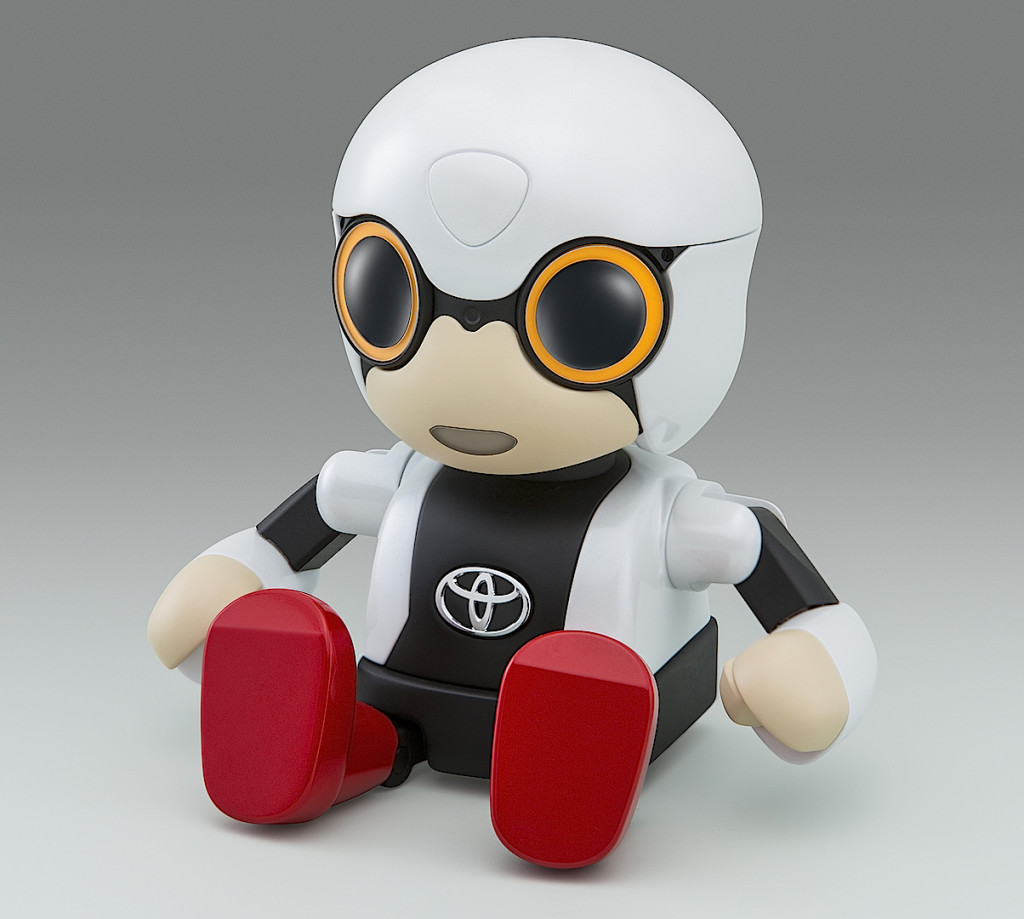 The 2015 Tokyo Motor Show will be held at Tokyo Big Sight from October 28 through November 8, with press days on October 28 – 29, a special preview day on October 30, and public days from October 30 through November 8.
The 2015 Tokyo Motor Show will be held at Tokyo Big Sight from October 28 through November 8, with press days on October 28 – 29, a special preview day on October 30, and public days from October 30 through November 8.
News source and photos courtesy of Toyota Motor Corp.
Story (commentary) © 2015 CarNichiWa.com
